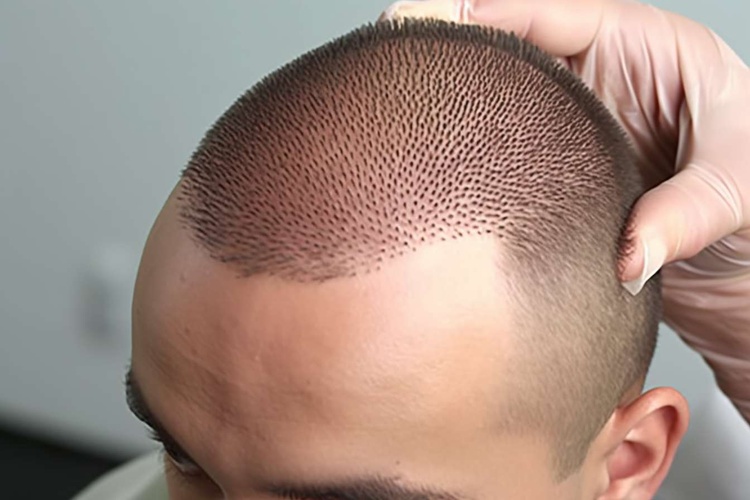Modern Hair Transplants: Techniques to Regain Confidence
Hair loss can dent self-image, but modern hair transplant methods offer durable, natural-looking solutions. This guide explains FUE and FUT, who benefits most, recovery expectations, and options beyond the scalp — from eyebrow to beard restoration. Learn cost ranges in Rotterdam and practical tips for choosing a reputable clinic before booking a procedure.

Hair loss affects millions and can undermine self-confidence. Fortunately, contemporary hair restoration offers reliable options that recreate natural hairlines and fuller coverage. This article outlines the main transplant techniques, who typically makes a good candidate, what to expect during recovery, how transplants can be used beyond the scalp, and practical cost and clinic-selection advice for people in Rotterdam.
Primary hair transplant techniques
Two methods dominate modern practice: Follicular Unit Transplantation (FUT) and Follicular Unit Extraction (FUE).
-
Follicular Unit Transplantation (FUT): Sometimes called the “strip” technique, FUT involves removing a narrow strip of skin from the donor site (usually the back of the head). That strip is dissected into individual follicular units under a microscope, then transplanted into the recipient areas. FUT can yield a high number of grafts in a single session and may be efficient for extensive reconstruction, though it leaves a linear scar that can be concealed by longer hair.
-
Follicular Unit Extraction (FUE): In FUE, individual follicles are extracted directly from the donor area using a small punch instrument. These grafts are then placed into balding or thinning zones. FUE avoids a linear scar and typically has faster healing and less visible scarring, making it appealing for those who prefer shorter hairstyles. It can be more time-consuming and sometimes more costly per graft than FUT.
Both techniques produce natural-looking results when performed by experienced teams. The ideal choice depends on hair characteristics, the size of the area to be treated, scarring preferences, and the surgeon’s recommendation.
Who is suited for a hair transplant?
A suitable candidate is usually someone with patterned hair loss (androgenetic alopecia) who has adequate donor hair to cover the desired area. Other considerations include:
- Age and progression: Candidates should have a stable pattern of hair loss or be counseled on future thinning. Younger patients may need careful planning to avoid repeat procedures.
- General health: Good overall health and realistic expectations support better outcomes.
- Donor availability: Enough healthy hair in the donor region is essential for lasting coverage.
- Expectations: A thorough consultation helps set realistic goals about density, hairline design, and what a transplant can achieve.
A qualified hair restoration specialist will evaluate scalp density, hair caliber, and the progression of hair loss before recommending a tailored plan.
Typical recovery and timeline
Recovery after a transplant is usually manageable but requires patience:
- Immediate post-op: Mild swelling, redness, and tenderness in donor and recipient areas are common. Pain is typically controlled with oral medications.
- First week: Patients can often return to work within several days to a week, depending on the extent of the procedure and how their job involves physical activity.
- Shedding phase: Transplanted hairs commonly shed during the first few weeks — a normal phase known as shock loss. This is temporary and part of the regeneration cycle.
- Regrowth: New hair typically begins to emerge around 3–4 months after surgery. Noticeable improvement appears over the next several months.
- Final results: Most patients see the full cosmetic outcome between 12 and 18 months post-op.
Following post-operative instructions — such as avoiding strenuous exercise, protecting the scalp, and adhering to wound-care guidelines — helps optimize healing and graft survival.
Using transplants beyond the scalp
Hair transplantation techniques are versatile and can restore hair to other areas:
- Eyebrows: Scalp follicles can be transplanted into the brow region to rebuild natural-looking eyebrows for those with sparse or damaged brows.
- Facial hair: Beards and mustaches can be reconstructed or densified using transplanted follicles, a solution popular with patients seeking fuller facial hair.
- Scar revision and other body areas: Transplants can camouflage surgical or traumatic scars and address localized hair loss on other parts of the body.
The principles are similar to scalp transplantation, but the angle, density, and hair direction must be planned carefully to ensure a natural appearance.
| Provider | Technique | Estimated Cost Range (EUR) |
|---|---|---|
| Hair Science Institute | FUE | 3,000 - 10,000 |
| Hairtransplant Clinic Rotterdam | FUE/FUT | 2,500 - 8,000 |
| Hairwish Clinic | FUE | 3,500 - 12,000 |
| Dr. Feriduni Hair Clinic | FUE/FUT | 4,000 - 15,000 |
Prices, rates, or cost estimates mentioned in this article are based on the latest available information but may change over time. Independent research is advised before making financial decisions.
Costs and considerations in Rotterdam
Hair transplantation is usually classed as a cosmetic procedure and is not covered by standard health insurance. Prices vary widely depending on the clinic’s expertise, the chosen technique, the number of grafts, and the complexity of the case. Beyond price, prioritize surgical skill, the clinic’s track record, and transparency about expected results.
When considering a clinic in Rotterdam (or elsewhere), evaluate:
- Before-and-after galleries and documented patient outcomes.
- The surgeon’s qualifications, experience, and membership in relevant professional bodies.
- Patient reviews and testimonials, ideally from independent sources.
- Clear explanations of risks, realistic expectations, and any need for future procedures.
Risks, limitations and final advice
While modern transplant methods are generally safe, potential risks include infection, scarring, temporary shock loss, and dissatisfaction with density or hairline design. A thorough consultation should outline these possibilities and provide personalized recommendations.
Choosing an experienced surgeon and realistic goals are the most important steps toward a successful outcome. If you are considering transplant work in Rotterdam or elsewhere, arrange a detailed assessment, compare multiple clinics, and verify credentials.
This article is for informational purposes only and should not be considered medical advice. Please consult a qualified healthcare professional for personalized guidance and treatment.






